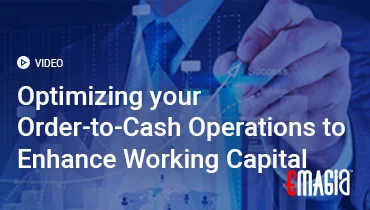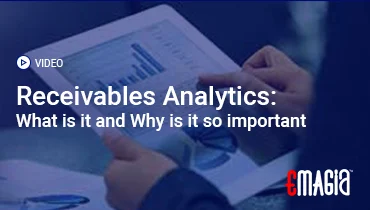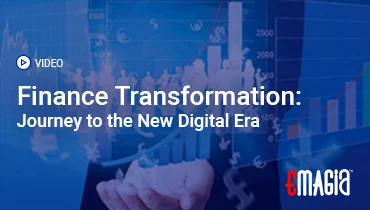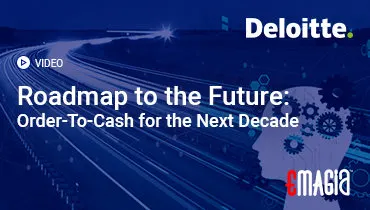In the digital age, businesses are under more pressure than ever to streamline operations, reduce costs, and maintain strict compliance with global regulations. One area that has traditionally been a bottleneck is invoicing. The shift from paper-based and even simple PDF-based billing to a true e-invoicing system is no longer a luxury—it’s a necessity. This detailed guide explores the ins and outs of this transformative technology, providing you with the knowledge to navigate the landscape of electronic invoicing and make an informed decision for your business. We will delve into what it is, its benefits, the global regulations you need to know, and what to look for in a robust electronic invoicing solution.
What is E-Invoicing? Beyond the Digital Document
Many people mistake a PDF sent via email for an e-invoice. While a PDF is an electronic document, a true e-invoice is fundamentally different. An e-invoice, or e-invoice, is a digital document that contains structured data, which can be automatically exchanged and processed by computers without any manual intervention. This structured format, often based on XML or JSON, allows the recipient’s system to understand and process the data instantly, validating it against purchase orders and other documents. This is the core principle behind the efficiency gains of a proper e-invoicing system.
The process of electronic invoicing involves more than just a file transfer. It is a complete workflow, from the moment an invoice is generated by the supplier’s ERP system to the point it is registered, validated, and received by the buyer’s system. This seamless, machine-to-machine communication is what truly distinguishes it from simple electronic documents and gives rise to a powerful electronic invoice management process.
Key Distinctions of a True E-Invoice
- Structured Data: It contains machine-readable data, not just an image of text.
- Automation: It allows for automated processing from creation to payment.
- Standardization: It adheres to specific formats (like PEPPOL or UBL) for interoperability.
- Compliance: It is designed to meet government mandates for real-time reporting and tax compliance.
The Overwhelming Benefits of Electronic Invoicing Services
The move to an electronic invoice system offers a cascade of benefits that impact nearly every aspect of a business, from cash flow to employee morale. These advantages are not limited to one party; both the sender and the receiver of an invoice experience significant improvements.
Improving Financial Health and Cash Flow with Electronic Invoice Processing
One of the most immediate and impactful benefits is the improvement of cash flow. With an e invoicing system, the time between generating an invoice and receiving payment is drastically reduced. Paper invoices are prone to delays from printing, mailing, and manual data entry, all of which extend the payment cycle. An electronic invoice is delivered instantly, validated automatically, and can be fast-tracked for approval, allowing you to get paid faster and manage your working capital more effectively. This streamlined e invoicing process also helps businesses capture valuable early payment discounts.
Drastically Reducing Costs and Environmental Impact
Traditional invoicing is expensive. It involves costs related to paper, toner, envelopes, postage, and the labor required for printing, folding, and mailing. An e-invoice management system eliminates these physical expenses entirely. Beyond the obvious, it also reduces the administrative overhead. Employees who once spent hours on data entry, reconciliation, and chasing lost invoices can now focus on more strategic, value-added tasks. This efficiency translates directly to significant cost savings and a smaller carbon footprint.
Enhancing Accuracy and Minimizing Errors
Manual data entry is a prime source of human error. Typos in an invoice number, an incorrect amount, or a wrong billing address can lead to payment delays, disputes, and frustrated customers. A robust electronic invoicing software minimizes these risks. The data is transferred and validated automatically, ensuring that the information on the invoice is accurate and consistent with the original purchase order. This not only speeds up the process but also reduces the number of rejected invoices and the time spent on exception handling.
Understanding the E-Invoicing Process
The journey of an electronic invoice is a carefully orchestrated sequence of events. While the specific steps can vary depending on the country’s mandate and the software used, a general process flow provides a clear picture of how it all works.
Step 1: Invoice Generation. The process begins when the supplier’s ERP or accounting system generates a sales invoice. Instead of creating a paper or PDF document, the system generates a file in a structured format, such as XML.
Step 2: Transmission and Validation. This structured file is then sent to a government-designated portal (in countries with a mandate) or to a service provider’s network. The portal or network validates the invoice for compliance with all legal requirements and business rules. Once validated, it is assigned a unique identifier, often called an Invoice Reference Number (IRN) or a similar code.
Step 3: Receipt by the Buyer. The authenticated electronic invoice is then transmitted to the buyer’s financial system. The buyer’s system automatically receives the invoice, verifies the unique identifier, and ingests the data directly into their accounts payable system. This completely bypasses the need for manual data entry.
Step 4: Automated Approval and Payment. Within the buyer’s system, the invoice can be automatically matched against the corresponding purchase order and goods receipt. If all information aligns, the invoice can be sent for approval and payment with minimal human intervention, completing the e invoice process with unparalleled speed.
Global E-Invoicing Regulations and Compliance
The global push for digital transformation is heavily influenced by government mandates aimed at reducing tax fraud and increasing transparency. As a result, e-invoicing is becoming mandatory in more countries every year. Compliance with these diverse regulations is a key consideration when choosing an electronic invoice system.
Europe: The EU has a strong focus on e-invoicing for public procurement, with many member states, including Germany, France, and Belgium, now extending mandates to B2B transactions. The Pan-European Public Procurement Online (PEPPOL) network has become a key infrastructure for cross-border transactions.
Latin America: This region has been a pioneer in e-invoicing, with countries like Brazil, Mexico, and Chile having long-standing mandates. Their Continuous Transaction Control (CTC) models require real-time reporting to tax authorities, putting a strong emphasis on the need for a compliant einvoicing solution.
Asia and the Middle East: Countries such as India, Singapore, and Saudi Arabia have also introduced or are in the process of implementing their own e-invoicing mandates, each with unique requirements and formats. Staying up-to-date with these shifting regulations is a monumental task for multinational companies without the right technology.
Choosing the Right Electronic Invoicing Software
With so many options on the market, selecting the right e-invoicing software requires careful consideration. A good einvoicing system should not only meet compliance requirements but also seamlessly integrate into your existing workflows to provide maximum value.
Key Features to Look for in an Electronic Invoicing Solution
When you are evaluating a potential provider, look for the following crucial features. First and foremost, the solution should have strong integration capabilities, meaning it can easily connect with your existing ERP, accounting, and procurement systems. Next, it must offer comprehensive compliance management, with the ability to handle various formats and country-specific regulations. You should also seek out a platform that provides excellent data security and audit trails to protect your sensitive financial information.
Furthermore, consider the user experience for both your internal team and your trading partners. A good supplier einvoicing solutions provider will offer a simple, intuitive portal where suppliers can easily submit and track the status of their electronic invoices. Finally, look for a solution that provides detailed reporting and analytics, giving you valuable insights into your accounts payable and receivable processes.
How Emagia Helps You Master E-Invoicing and Beyond
The journey toward a fully digitized and automated financial process is complex, but with the right partner, it doesn’t have to be a struggle. Emagia offers an advanced platform that leverages artificial intelligence to transform your entire cash flow cycle, including the critical area of electronic invoicing. Our solutions are designed to go beyond basic compliance, providing an intelligent approach to e invoice management that boosts efficiency, enhances data accuracy, and frees your teams from manual, repetitive tasks.
We provide real-time visibility into the entire invoicing and payment process, empowering you to make smarter, data-driven decisions and forge stronger relationships with your customers and suppliers. With Emagia, you get more than just a system; you get a strategic partner committed to your digital transformation.
FAQs About E-Invoicing
What is an e-invoice?
An e-invoice is a digital invoice that is created, transmitted, and received in a structured, machine-readable format, such as XML or JSON. This format allows for automatic processing by the recipient’s system without manual data entry, distinguishing it from a simple PDF sent via email.
Is e-invoicing mandatory?
In many countries around the world, e-invoicing is becoming mandatory, especially for B2B (business-to-business) and B2G (business-to-government) transactions. This is a global trend driven by governments seeking to improve tax compliance and digitalize their economies.
What are the main benefits of e-invoicing?
The key benefits include faster payments and improved cash flow, significant cost reductions from eliminating paper and manual labor, enhanced data accuracy, and simplified compliance with tax regulations.
How is an e-invoice generated and processed?
The process typically involves a supplier’s accounting system generating a structured file, which is then sent to a validation portal or service provider. The portal validates the data and issues a unique reference number, after which the invoice is automatically transmitted to the buyer’s system for automated processing and payment.
What is the difference between an e-invoice and a PDF invoice?
A PDF is a non-structured, or “unstructured,” file format. While it is an electronic document, the data within it is not machine-readable, requiring manual entry or optical character recognition (OCR) software. An e-invoice, on the other hand, contains structured data that can be automatically processed by a computer system.
What is supplier e-invoicing?
Supplier e-invoicing refers to the process where a supplier generates and sends invoices to their customers in a structured electronic format. This is often done through a platform that allows the supplier to easily create and track the status of their invoices and ensures compliance with the customer’s requirements and legal mandates.
What is electronic invoice management?
Electronic invoice management is the complete process of handling invoices digitally, from creation and sending to receipt, approval, and archiving. A robust system for electronic invoice management automates these steps, reduces errors, and provides real-time visibility into the status of all invoices.
Conclusion: The Future of Business is Electronic Invoicing
The adoption of electronic invoicing is more than just a technological upgrade; it’s a fundamental shift in how businesses manage their financial operations. The clear benefits in cost reduction, operational efficiency, and cash flow, combined with the growing wave of government mandates, make it an indispensable tool for any modern enterprise. By carefully choosing an advanced electronic invoice system that aligns with your specific needs and integrates with your existing infrastructure, you can not only stay compliant but also gain a significant competitive advantage. This is the moment to move beyond outdated, paper-based processes and embrace the future of financial transactions.



